Williston Run - 240 Miles of Clenched Teeth
Weather was clearing off to the east when George and I awoke, had coffee and cold breakfast stuff (our standard fare), and a taste of champagne to celebrate the launch of the journey. With Eric Clapton/JJ Cale "Down the River" blaring on the sound system and exuberance overflowing, we cast off and started out of our bay into the expanse of Ft. Peck Lake. The boat was muddied up from the day before, but the mild chop took care of that.
Despite the heavy load, the Hewes 200 Pro-V hull design and beefy Honda 135-horse jumped the boat up on plane (basically skipping along on the surface) readily, and we bounced merrily down the 85-mile length of the beautiful lake at 30 mph. Motor and music competed loudly and we thought this was already the best time ever. I held on and was happy to have spent the bucks to upgrade the boat's seats, which minimized the shocks.
I looked back and considered the load of gear and the process we would face in the coming days establishing "a place for everything, and everything in its place". Such disciplines would make our lives steadily easier as we battled chaos toward order.
We spent the afternoon and night at the Fort Peck Marina, as guests of the owner Tara Waterson. David Miller, the COMPLETE PADDLER author who kayaked the whole Missouri River, had asked me to pass on his regards to Tara, and she was pleased to be remembered by him. By the way, this was the first of many days when George and I talked about what a superhuman feat Dr. Miller (he's a college prof) did, paddling all those miles we were motoring through. And his book is a remarkably thorough guide for all kinds of things -- indispensable for paddlers and for dummies trying to take a prop rig down through these jetboat waters.
A couple of old fishermen, C. A. and Orville, over beers, gave us extensive opinions on where to put in below the dam and condition of the river going down from there. And about many other things, like catching Walleye and cleaning Paddlefish. So, armed with that information, the next morning we met friend John and he portaged us around the dam and launched us into the river. This was another milestone, to be on the free-running Missouri.
George did the piloting these first days because he had substantial experience running rivers in powerboats and rafts, and a well-developed sense of where the channel might be and where hazards lurked. We have a wonderful Lowrance GPS/depth finder, armed with old channel waypoints that George had laboriously plotted and fed into the unit so they displayed and we could follow. Even with this invaluable guide, since the river is always changing, we still had to constantly work around (and off) underwater sandbars. My job was to watch for signs of sand or hazards in the water, as well as clues to where the fastest flow was. Also I would run back and report how deep our prop was set, to optimize sneaking over shallows -- or blasting back out of them. See the intense concentration of the pilot.
In addition to hidden sandbars, in this stretch were quite a number of floating logs and many trees in the water, stuck in the sand or still standing. Having the motor hit one of these could mean breaking it, and leaving us to struggle through with the small (9.9 hp) backup motor.
We were fortunate that at this flow we did not have stands of willows down in the water, but we could see many thick stands on islands, dead from the immense flood that came down the river in 2011. William Least Heat-moon, in his book RIVERHORSE, recounts how in the mid-1990s they ran into a place in this area where the willows made a wall all the way across the river that they had to fight their boat through, upstream.
Soon after the rapids excitement, we pulled into a little cove and celebrated ending the first day with a coupla beers, still afloat and moving forward through the 240 miles to Williston. Here's happy Jon. By the way, the rubber duckie tied on top is Lolita. She is there in case one of us would have to go first, taking soundings and leading the boat through where no channel might be found. Or in the worst case we could ride Lolita out and send a large helicopter with grappling hooks back to pull the boat up out of mud flats somewhere. (That had been my nightmare scenario for months. In the coming days it would continue to look like a possibility.)
The rest of the week was a series of long days in which both of us were preoccupied with the task of finding enough water, mile after mile, to keep moving the boat downriver. Sandbars were endless, and it was slow going most of the time. Sometimes we made only about 35 miles in a day. The tools were the waypoints on the GPS, the depth finder, and clues such as visible current, Indian soap (bubbles of foamy white protein material on the surface) and debris being drawn along on the fastest water, and the general tendency of a river to "pinball" from one shore to the other and cut out around the outside bank on a curve. Places not to go were suggested by visible trees in the water, disruption in the current, funny wave action, linear stretches with change in water color, brown water, and the like. By midweek I started cutting my teeth on piloting in these conditions. It was very frightening to get into one foot of water and struggle around trying to escape, particular when it seemed that I was in a cul-de-sac and surrounded by shallows. Gradually skill and confidence built.
When we could catch our breath and look around, the scenery was beautiful. The river was trimmed with mature cottonwood stands, and in the distance there were occasional majestic bluffs.
We saw a variety of wildlife, including geese, eagles, even wild mustangs on the Ft. Peck Indian reservation. But there were no people for days, save a couple of boats with Fish and Game guys doing field work. It was interesting to see that the mama geese flew away as we approached, leaving their goslings to fend for themselves. They would typically dive and swim away, but we had to stop the prop and float by a few times.
At the end of the day we tied off to the bank, ideally in slack water but not always. We found that a good technique was to set two anchors onshore, at ninety-degree angles from one another. The boat would swing as it pleased, but this was a very secure mooring. One night we were backed by an impressive bluff, made finer as the setting sun cast shadows through it.
After we got settled in, we would have dinner, and these were meals George's wife Nan had prepared for this first section of the trip, shrink wrapped and frozen. Delicioso!
And then the storm came, with a fair amount of wind and lightning and rain, but the boat enclosure seemed to do very well.
As we approached Williston, as David Miller had suggested, we contacted the local USACE office for tips on getting through the shallow river delta going into Lake Sakakawea (Sak for short). Their advice was to keep the prop up and look for the faster-moving water. Okay then.
Without as bad a time as I had expected, we came through that notoriously bad area and were very pleased to be in open water -- and about ten miles away from a shower! In a short time we came into the marina at Lewis and Clark State Park, refueled the boat, and tied off in a slip in the protected cove.
We met John there, and since we had noticed oil leaking out of the boat's dashboard under the helm, he and I ran into Williston to look for something comparable. That was an experience. The oil and gas industry has taken over that entire area, and it is a runaway boomtown. Free Tums for the city planners. Drilling rigs scattered around outside town, every chain business imaginable building sprawl in all directions, streets choked with pickups at four on Friday afternoon, Walmart jammed with busy folks, and (John observed) dust. Dust was everywhere, because everything is under construction, ground cover is gone, and the Dakota winds whip up the dirt. While not my style, I had to admit that the wild west boomtown feel of the place was genuinely exciting.
This particular Friday was also my birthday. My present to myself was a long hot shower over at the campground. Then the three of us gathered in the boat, and voila! A birthday party. George had squirreled away a bottle of red wine, which we had with a dinner of Nan's wonderful lasagna, and he also had a hidden a cake in a cooler. Well, cooler slosh (ice melt) had been a little unkind to that cake, so John had rounded up a second cake. We ate well and had a nice evening.
John decided to stay around, so since it was a warm evening he bedded down on the pier next to the boat. It had been a fine birthday and, having ended well, a fine week. We shut down for the night and drifted off. But the clouds were drifting in.
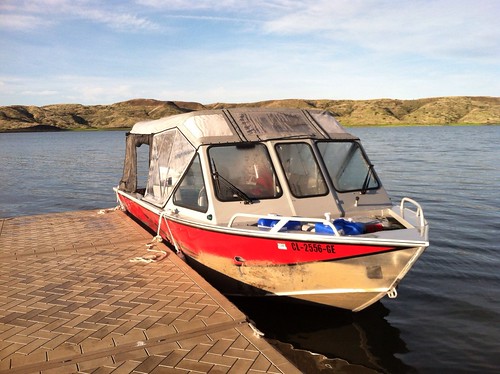
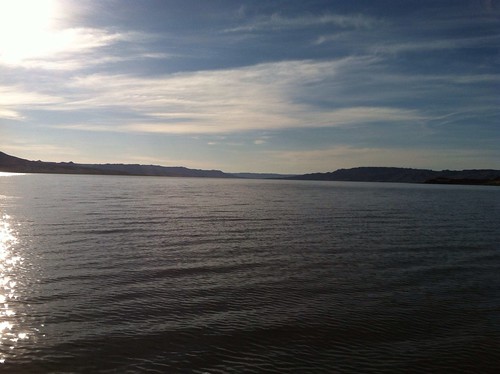
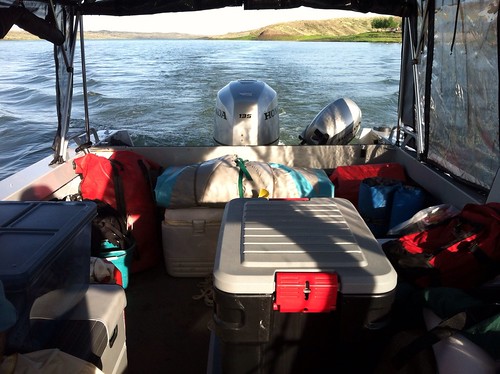
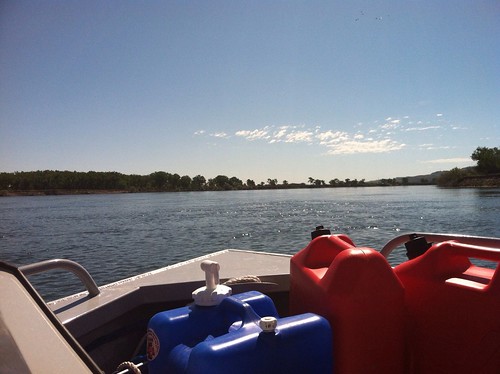
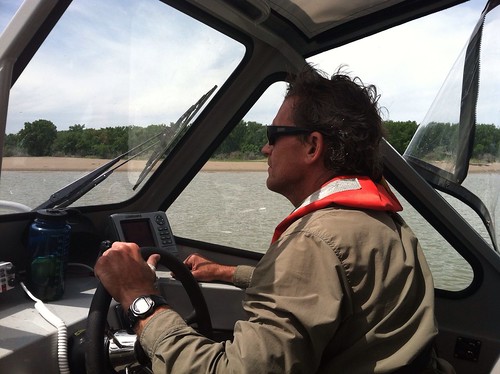
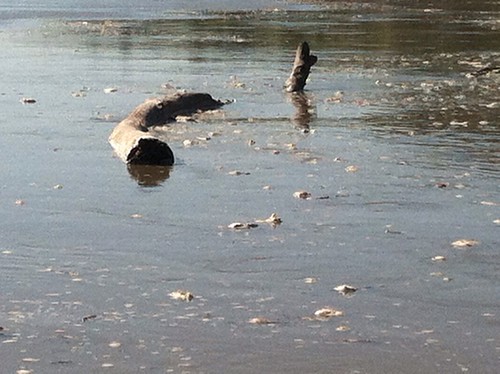

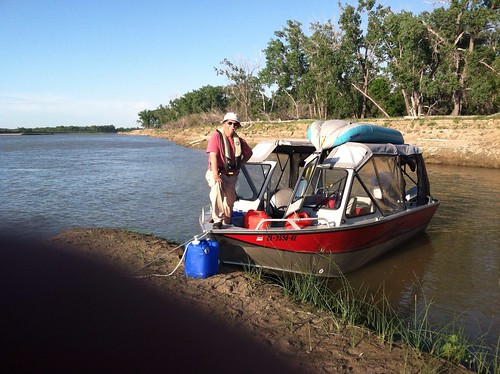
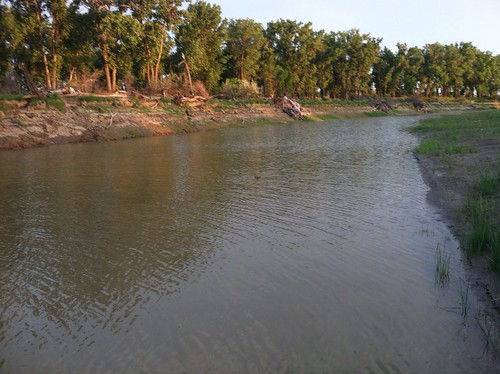

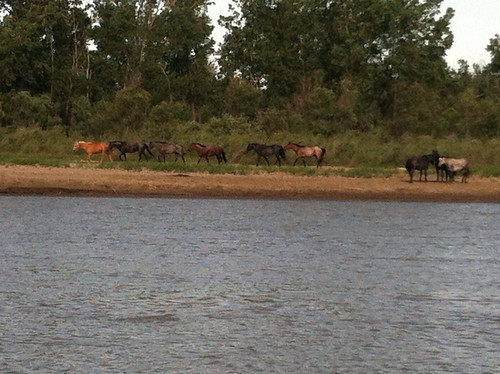
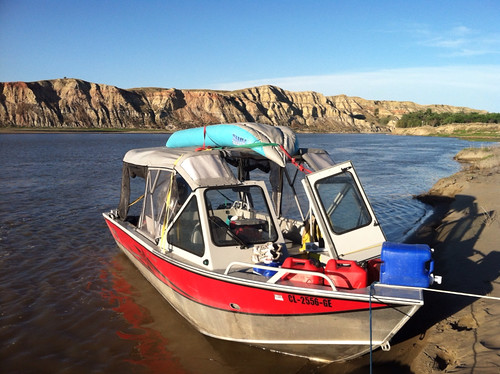

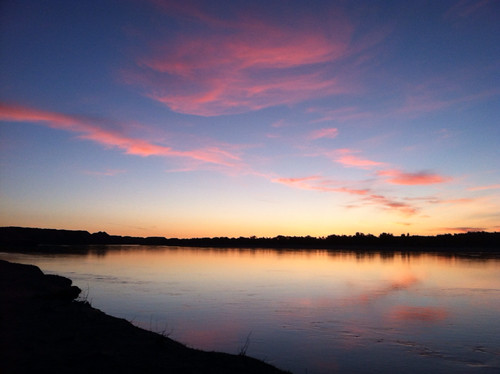
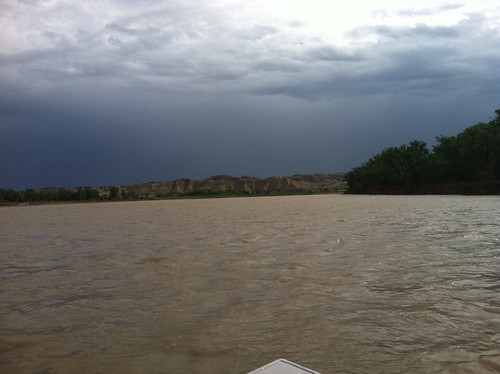
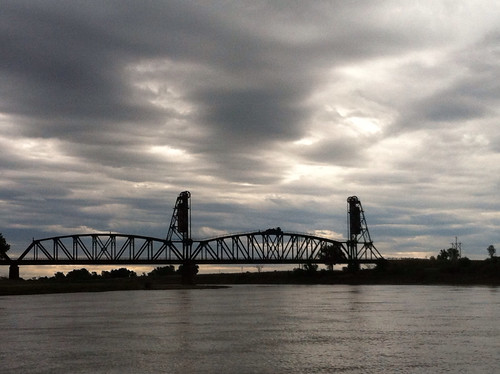

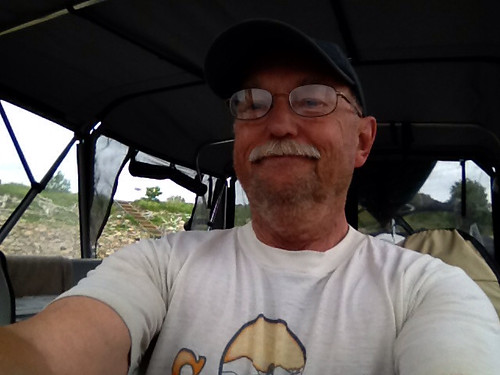
Happy belated b'day. Sounds like you're having a fine, eventful time.
ReplyDelete